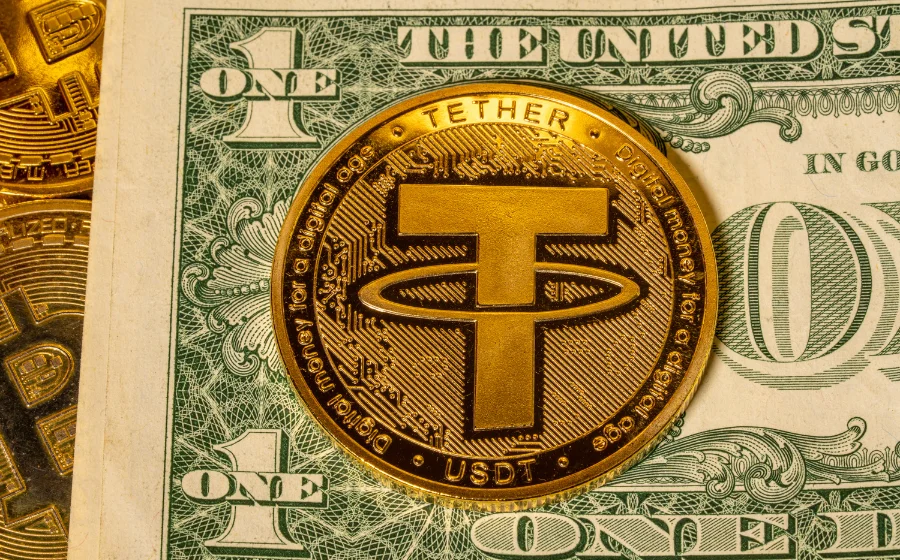
KEYTAKEAWAYS
- Cross-chain bridges connect blockchains to transfer assets and data, improving interoperability and liquidity.
- Trusted bridges rely on central authorities, while trustless bridges use smart contracts for decentralization.
- While bridges reduce costs and expand opportunities, they carry risks like smart contract bugs and custodial vulnerabilities.

CONTENT
Cross-chain bridges connect blockchain ecosystems, enabling seamless transfer of assets and data. Learn about their benefits, risks, and types, from trusted to trustless bridges.
WHAT IS A CROSS-CHAIN BRIDGE?
A cross-chain bridge, like a real-world bridge, connects two independent blockchain ecosystems.
Its primary purpose is to enable the transfer of assets, data, and information between different blockchains, allowing previously isolated networks to interact and collaborate seamlessly.
-
Why Do We Need a Cross-Chain Bridge?
In the blockchain world, each network operates on its own rules and maintains an independent ledger, similar to how each country has its own currency and financial system.
To move assets or share data between blockchains, a cross-chain bridge becomes essential.
A cross-chain bridge solves several critical challenges:
- Asset Interoperability
Different blockchains use unique token standards and assets. Without a cross-chain bridge, these assets cannot move between networks.
For example, a cross-chain bridge allows users to convert USDT on Ethereum’s ERC20 standard to USDT on Tron’s TRC20 standard, enabling seamless asset transfers between blockchains.
- Data Interoperability
Blockchains often have different data structures and formats, making data sharing difficult.
A cross-chain bridge facilitates data interoperability, allowing applications on different blockchains to share and utilize data efficiently.
- Enhanced Liquidity
A cross-chain bridge improves liquidity across blockchain ecosystems by enabling assets to move freely between chains.
This boosts market efficiency, reduces transaction costs, and fosters a more connected blockchain economy.
-
Cross-Chain bridge Real-World Analogy
A cross-chain bridge functions similarly to exchanging currency when traveling abroad.
Just as you need to convert your local currency into the destination country’s currency to spend it, a cross-chain bridge allows you to transfer your assets from one blockchain to another, making them usable across different networks.
In summary, a cross-chain bridge is an essential tool for achieving asset and data interoperability across blockchains.
It plays a key role in fostering blockchain integration, improving liquidity, and enabling a seamless transfer of value and information.
>>> More to read: The 5 Best Cross-Chain Bridges for Breaking Blockchain Barriers
TYPES OF CROSS-CHAIN BRIDGES
Cross-chain bridges can generally be categorized into two types: Trusted Bridges and Trustless Bridges.
-
What Is a Trusted Cross-Chain Bridge?
A Trusted Cross-Chain Bridge relies on a central authority or specific entity to facilitate operations. Users must trust the bridge operators to ensure the security and reliability of their assets and data.
These bridges usually offer a simpler user experience, making them suitable for beginners.
However, this reliance on centralization introduces risks, such as single points of failure or potential misuse.
In essence, a trusted cross-chain bridge plays a role similar to centralized exchanges (CEX) in cryptocurrency transactions.
-
What Is a Trustless Cross-Chain Bridge?
A Trustless Cross-Chain Bridge operates in a fully decentralized manner.
It does not depend on any central authority or specific entity; instead, it leverages smart contracts to enable cross-chain functionality.
Users can transfer assets and data across blockchains without needing to trust any third party.
This type of Cross-Chain Bridge provides higher security and anonymity.
However, it often comes with a steeper learning curve, requiring users to have technical knowledge and perform more complex steps.
In comparison, a trustless cross-chain bridge is similar to decentralized exchanges (DEX) in cryptocurrency transactions.
>>> More to read: What Is ICO? Beginner’s Guide
CROSS-CHAIN BRIDGES BENEFITS & RISKS
-
Benefits of Cross-Chain Bridges
1. Reduced Transaction Fees
For example, if you hold ETH on Ethereum’s mainnet but want to explore DApps with lower fees, you can use a cross-chain bridge to transfer your ETH to an Ethereum Layer 2 Rollup, enjoying significantly cheaper transaction costs.
2. Access to DApps on Other Blockchains
Imagine you’re using Aave on Ethereum’s mainnet for USDT lending, but you discover that Aave on Polygon offers higher interest rates for USDT. With a cross-chain bridge, you can seamlessly transfer your assets to Polygon and capitalize on better returns.
3. Improved Asset Liquidity
Cross-chain bridges allow assets to move freely between blockchains, enhancing liquidity and enabling users to take advantage of opportunities across different ecosystems.
4. Increased Blockchain Interoperability
By connecting isolated networks, cross-chain bridges enable collaboration between blockchains, fostering innovation and expanding use cases for blockchain technology.
-
General Risks of Cross-Chain Bridges
Despite their benefits, cross-chain bridges carry inherent risks:
-
Smart Contract Vulnerabilities
If a bug or error exists in the smart contract code, it could result in significant losses of user funds. -
Technical Risks
Software failures, bugs, human errors, spam transactions, or hacking attempts can disrupt operations and lead to asset losses.
-
Risks in Trusted Cross-Chain Bridges
-
Censorship Risk
Since trusted cross-chain bridges rely on operators, these central entities could potentially interfere with user operations, such as blocking transfers or freezing assets. -
Custodial Risk
Trusted bridge operators control the custody of users’ assets. Malicious operators could collude to steal funds, posing a significant risk to users.
>>> More to read: Blockchain Forks: Understanding Hard Forks and Soft Forks
CROSS-CHAIN BRIDGE CONCLUSION
Cross-chain bridges play a crucial role in the blockchain ecosystem, establishing solid connections between different blockchain networks.
By enabling the seamless transfer of assets and data across chains, cross-chain bridges expand the scope of blockchain applications and provide users with greater opportunities and flexibility.
As technology continues to advance, cross-chain bridges are expected to play an even more significant role in the future, offering enhanced possibilities and convenience for users.
Let’s look forward to more innovations and breakthroughs as we witness the flourishing growth of the blockchain world!
>>> More to read: How to Get Crypto Passive Income Easily?


















